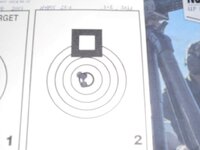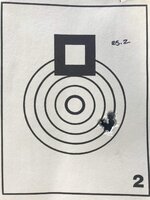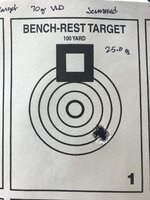- Messages
- 4,277
- Reactions
- 10,736
I recently bought a Tikka T3 Superlite in .223 Rem. It's twisted 1-8. I have another T3 that's twisted 1-10", it shoots 50 grain BT and TTSX into little bitty groups.
So I'm working on the Superlite as a long range shooter using Nosler's new 70 grain RDF bullet. Benchmark didn't work out so well so I'm trying Varget. I loaded several at three different charge weights and shot them over a chrony today.
Here's the results:
First up, T3 Superlite, 1-8"
25.0 grains, average 2824, high 2827, low 2823, ES 4
25.5 grains, average 2908, high 2929, low 2891, ES 38
26.0 grains, average 2924, high 2927, low 2920, ES 7
All brass looked great, no pressure signs.
Next, T3, 1-10"
25.0 grains, average 2851, high 2865, low 2838, ES 27
25.5 grains, average 2911, high 2934, low 2879, ES 55
26.0 grains, average 2969, high 2996, low 2937, ES 59
All brass looked great, no pressure signs.
25 grains was a little crunchy, 26 was really crunchy. I'm interested in the bullet for the Superlite, so I think I'll try a depth test with 25.5 grains and see how they shoot.
P
So I'm working on the Superlite as a long range shooter using Nosler's new 70 grain RDF bullet. Benchmark didn't work out so well so I'm trying Varget. I loaded several at three different charge weights and shot them over a chrony today.
Here's the results:
First up, T3 Superlite, 1-8"
25.0 grains, average 2824, high 2827, low 2823, ES 4
25.5 grains, average 2908, high 2929, low 2891, ES 38
26.0 grains, average 2924, high 2927, low 2920, ES 7
All brass looked great, no pressure signs.
Next, T3, 1-10"
25.0 grains, average 2851, high 2865, low 2838, ES 27
25.5 grains, average 2911, high 2934, low 2879, ES 55
26.0 grains, average 2969, high 2996, low 2937, ES 59
All brass looked great, no pressure signs.
25 grains was a little crunchy, 26 was really crunchy. I'm interested in the bullet for the Superlite, so I think I'll try a depth test with 25.5 grains and see how they shoot.
P
















